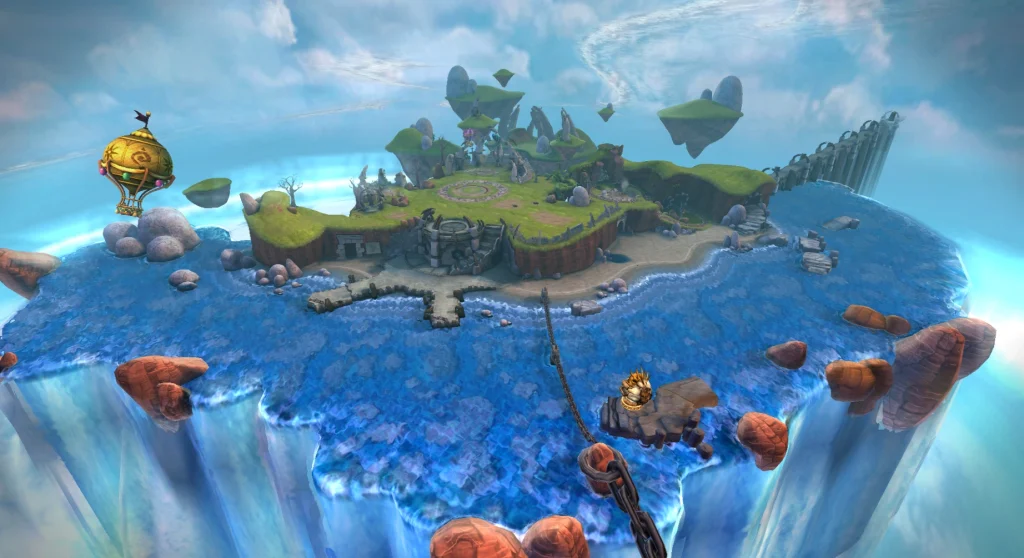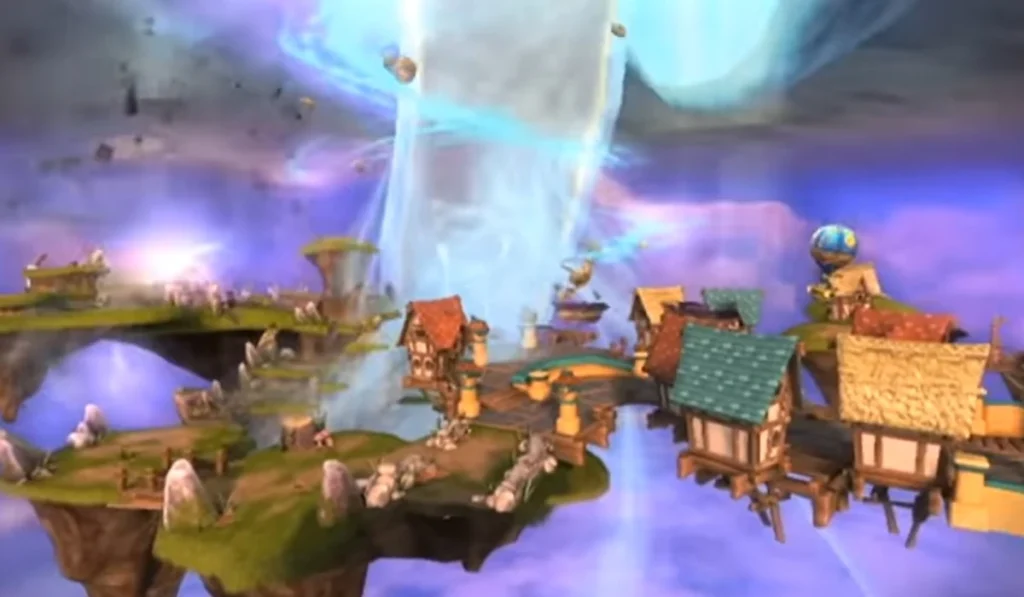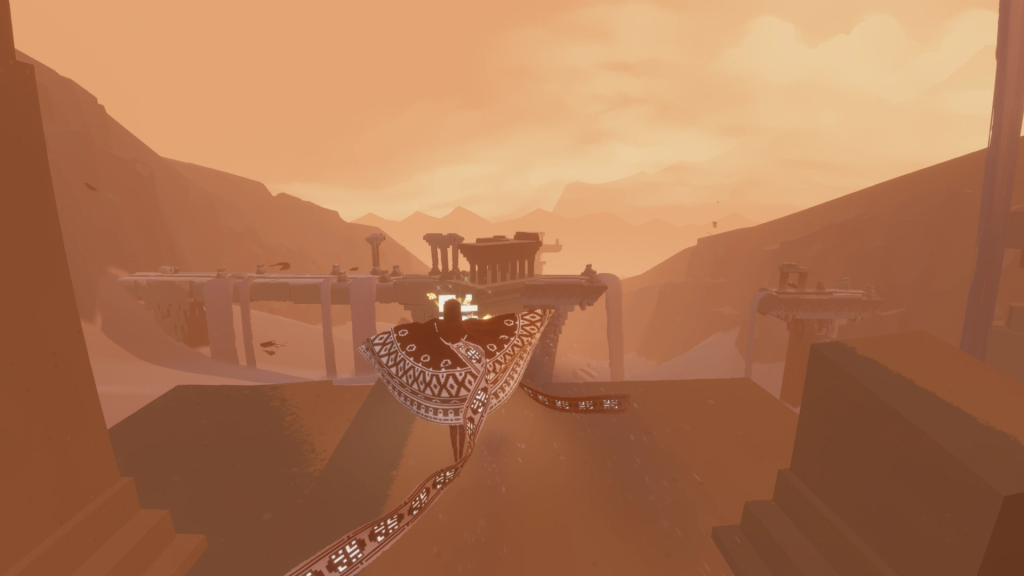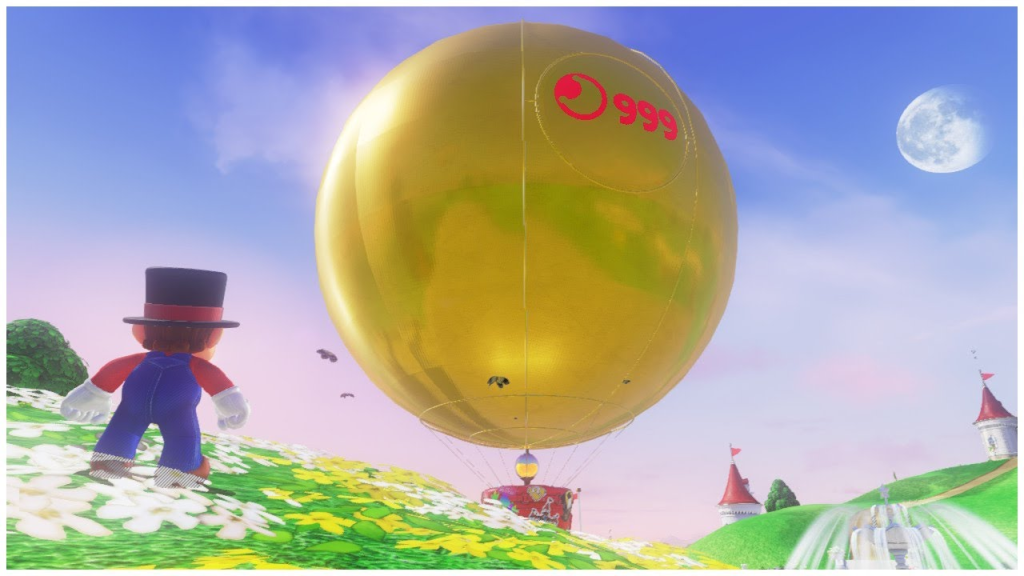
Skylanders Spyros Adventure
- Bright Art Style:
- Skylanders: Spyro’s Adventure has a colorful, cartoonish look that appeals to all ages with its distinct levels and characters.
- Fantasy Worlds:
- The game takes players through various magical realms, like forests and lava pits, each with its own theme.
- Unique Characters:
- Each Skylander has a special design with fun features and colors that match their elemental powers.
- Interactive Levels:
- Players can interact with the environment, using breakable crates and movable platforms, and must use different Skylanders to access certain areas.
- Dynamic Lighting:
- The game uses lighting and shadows to add depth and enhance the magical feel of the environments.
- Toy-Like Design:
- The game’s environments look like a playful, oversized toy world, with rounded edges and simple textures.
- Portals and Gates:
- Players use portals and elemental gates to explore new adventures and find hidden areas.
- Whimsical Structures:
- Buildings in the game have fun, exaggerated shapes and bright patterns that create a fantasy atmosphere.
- Visual Effects:
- Exciting effects like elemental bursts and sparkles make battles and interactions lively.
- Collectibles:
- Players search for treasures, hats, and character upgrades, making exploration feel rewarding.

Journey

- Minimalistic Art Style:
- Journey has a simple and elegant art style that focuses on essential shapes to evoke emotion without too much detail.
- Desert Landscape:
- The game takes place in a vast desert filled with sand dunes and ancient ruins. This setting allows players to concentrate on the emotional journey.
- Color Palette:
- The game uses warm colors like red, orange, and yellow for the sand and sky, creating feelings of solitude and calm. Cooler colors appear in underground areas for contrast.
- Dynamic Lighting and Effects:
- The game uses light and shadow to change the atmosphere as players progress. Sunlight and dust particles enhance the game’s dreamlike quality.
- Symbolic World Design:
- The environments have deep meaning, featuring tall structures and mysterious symbols that hint at a larger story about resilience.
- Soft Animation:
- The character moves smoothly, especially the scarf that flows dynamically with the environment, adding to the serene feel.
- Visual Storytelling:
- The environment shares the story through visual cues and changes, showing the character’s journey and the world’s history.
- Atmospheric Perspective:
- The game creates a sense of scale with distant mountains and wide landscapes, immersing players in a vast and empty


I want my world to feel vibrant with life on one side, and desolate on the other, focusing on the life too much can cause the connection between both worlds to feel disconnected and like the player isn’t interacting with half of the world.
I want to revisit the points I made in Week 2. My goal is for each area of the game to feel like a unique ‘place’ that players can easily remember and become attached to. Even the transformative areas that connect these distinct locations should leave a lasting impression on players. Take, for example, ‘The Odyssey’ in ‘Super Mario Odyssey.’ Although it serves as a level selector, the ship itself evolves alongside the players, becoming an integral part of their interactions with the game.

Leave a Reply